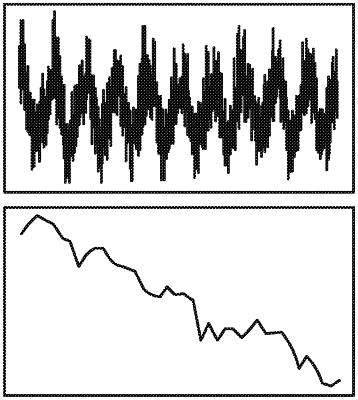| CPC G06F 16/215 (2019.01) [G06F 16/2474 (2019.01)] | 20 Claims |

|
1. A method, for automatically determining an anomaly detection method for use on a class of time series, comprising:
receiving, by a processor, a plurality of datasets for a given time series, wherein each of the plurality of datasets is associated with a different one of a plurality of predefined time series characteristics, wherein each of the plurality of datasets has been classified into one of a plurality of known classes based on expected properties of the dataset before receipt by the processor;
identifying, by the processor, a subset of anomaly detection methods for evaluating the plurality of datasets based on the known class associated with each of the plurality of datasets, wherein the subset of anomaly detection methods is filtered from a larger set of anomaly detection methods;
calculating, by the processor, an anomaly detection score for each of the subset of anomaly detection methods, the anomaly detection score based on false positives and false negatives detected by applying a sliding window across all datasets of the plurality of datasets;
calculating, by the processor, an anomaly score threshold value based on a minimum number of the false positives and false negatives in the sliding window across all datasets and a probationary period for each of the plurality of datasets;
identifying, by the processor, one of the subset of anomaly detection methods as a recommended anomaly detection method for use on time series data of a same class as the known class of the given time series, wherein the recommended anomaly detection method is identified by comparing the anomaly detection scores for each of the subset of anomaly detection methods to the anomaly score threshold value; and
applying, by the processor, the recommended anomaly detection method to identify anomalies for additional time series of the same class.
|